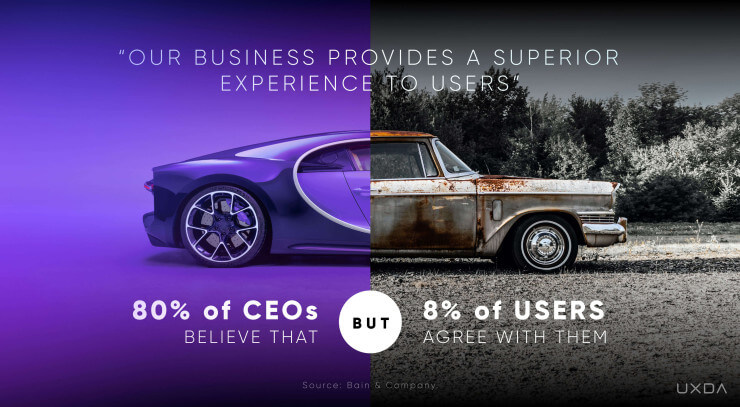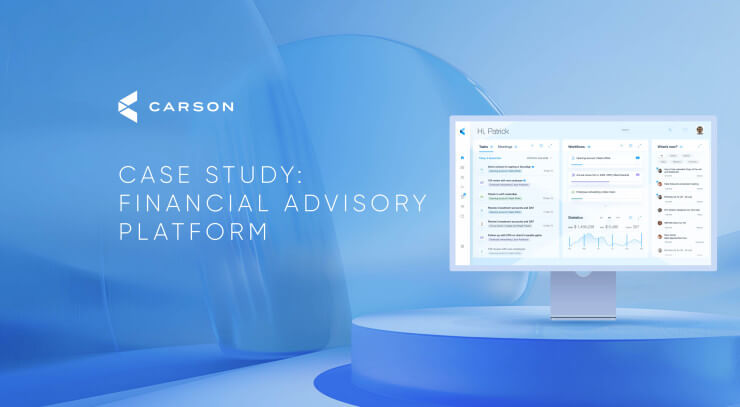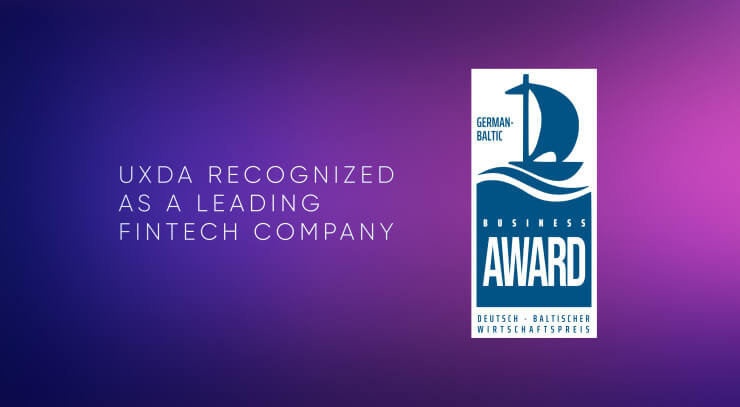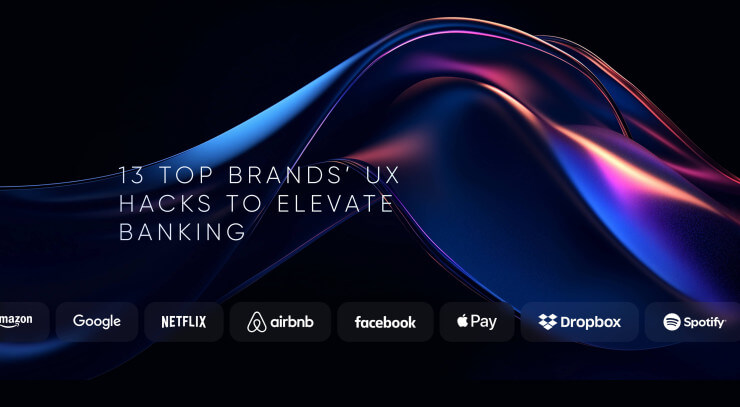In the high-stakes race of digital banking and Fintech, one misstep can cost millions in lost customers, brand damage and wasted development. Ironically, that misstep often happens before the project even starts—during procurement. Month after month, the UXDA team meets with banks with grand ambitions to transform their digital products. And sometimes, instead of seeking strategic expertise and customer-focused innovation, procurement teams box-tick their way to the “cheapest offer,” only to realize too late that weak foundations lead to fragile products. However, there are also examples of very successful actions by procurement teams, which we will discuss in this article.
Unfortunately, the influence and power of procurement in financial companies is often underestimated. Many employees of financial companies still view procurement as a basic administrative function—merely finding the cheapest suppliers and pushing paperwork. In reality, procurement is a strategic driver of business value, shaping the entire value‐creation chain and contributing significantly to long‐term business success.
If procurement fails to prioritize quality design and end-customer experience in line with brand strategy, no amount of technology or marketing can save a newly created digital service. The good news? Successful examples from procurement teams show that a few critical mindset shifts can turn tenders from a stumbling block into a driving force for digital excellence.
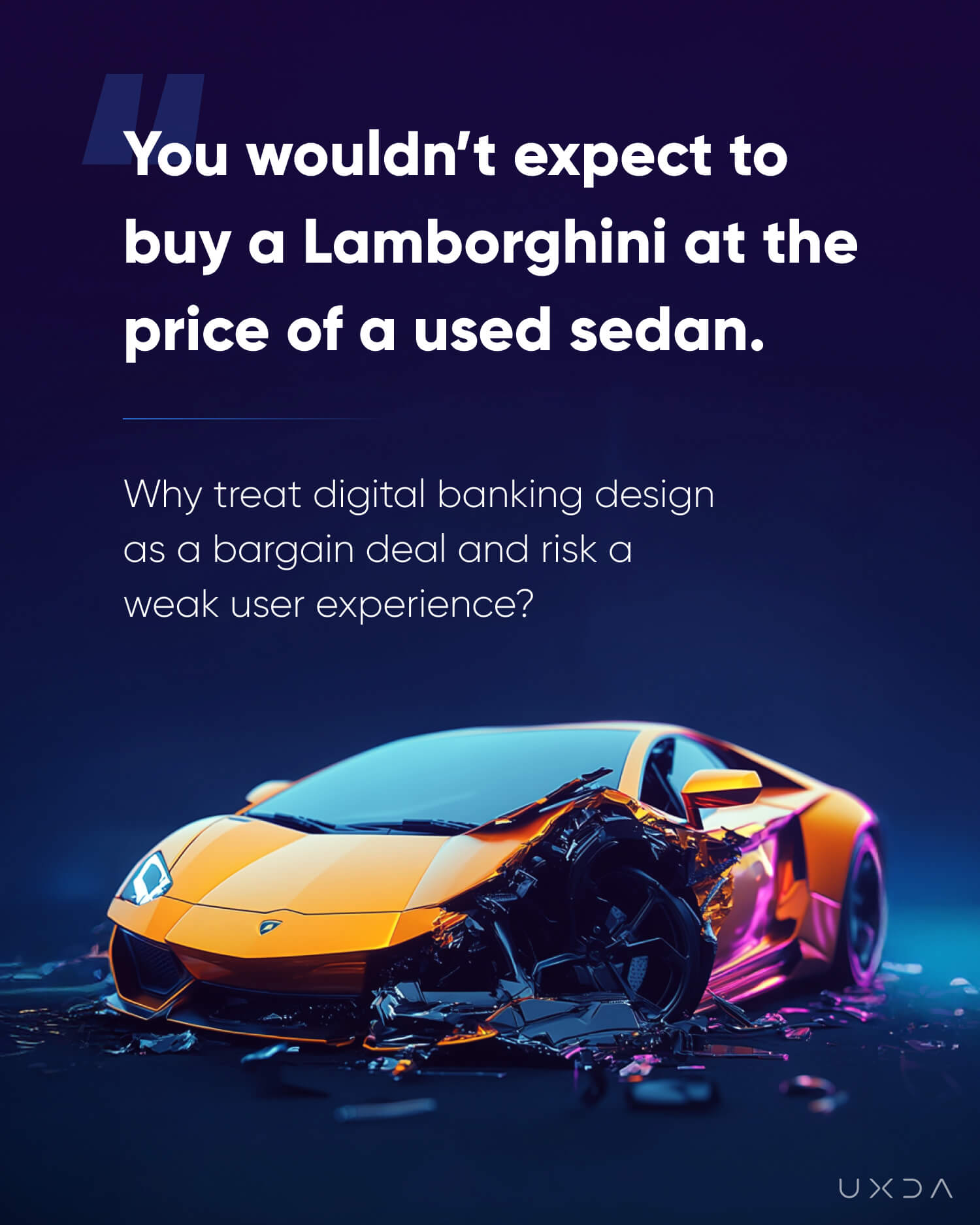
Our UXDA design agency team participates in several selection tenders each month for leading banks worldwide. Time and again, we witness the same frustrating pattern: despite high ambitions to revolutionize their digital services, procurement teams often reduce the process to a race to the bottom focused on costs. Instead of focusing on depth, expertise and strategic alignment, some Requests for Proposals (RFPs) become box-ticking exercises—destined to produce a lackluster product rather than a true digital breakthrough.
This recurring scenario reveals a critical truth: if the foundation for your digital product isn’t established properly from the start, only a limited amount of talent and technology can fix it later. Below, we explore the misconceptions and pitfalls commonly observed in bank procurement and some advanced procurement tactics to avoid costly mistakes that undermine user experience in digital services, erode brand trust and waste millions in the long run.
The Procurement Misconceptions That Derail Digital Banking
Procurement teams aim to create precise RFP documentation outlining specific activities and objectives. However, this process often occurs without firsthand experience with building digital products or fully understanding what’s required to achieve the desired business impact. It’s like drafting your own medical treatment plan before consulting a doctor. Without the right expertise, critical factors are overlooked, leading to misaligned priorities and suboptimal outcomes.
This approach extends to setting rigid timelines, imposing budget caps and distributing spreadsheets for vendors to fill in—turning the selection process into a numbers game. While it may seem like a structured and thorough method, it often reduces the complex role of product experience to a checklist, overlooking UX's profound impact on business success. This misconception can lead to short-sighted decisions, in which cost and speed take priority over long-term strategic value, ultimately jeopardizing the effectiveness of the digital product.
As a result, the first interaction is often a generic invitation to participate in the RFP, with no additional context beyond the rigid requirements outlined in the document. This one-sided approach eliminates the opportunity for meaningful collaboration and prevents vendors from truly understanding the business challenges, user needs and strategic vision behind the project.
Without a broader awareness of the strategic value of user experience, they may unknowingly push for decisions that undermine the complex financial product’s foundation. These teams do their best under the constraints they have, yet they are frequently steered off course by the belief that all financial products are designed in a similar way, that every design agency is the same and provides similar services, that a lower price won’t compromise quality or that design is merely a cosmetic aspect of development and will not impact business objectives. Following are common misconceptions:
“We need the cheapest offer”
Digital design is often treated as a commodity—something any agency can produce at a minimal cost. In reality, a low-ball approach to design is a surefire way to create a flimsy user experience. Banks often pour millions into tech and marketing, only to find out too late that the product never had a sound foundation.
“All agencies are the same”
Agencies range from generalists dabbling in many fields to specialists with deep financial expertise. Procurement teams that don’t evaluate industry-specific experience miss out on the strategic insights and methodologies that differentiate average outcomes from industry-defining success.
"Design is commodity and a pretty package"
Treating design as just another line item, or a “final coat of paint,” overlooks its critical role in shaping the bank’s future. Your product is your brand. Design, especially in financial products, isn’t just aesthetics; it's built on deep user research, regulatory expertise and seamless information architecture. Design is an integral, strategic driver of user adoption, satisfaction and brand loyalty. Strategic design isn’t a cost—it’s a long-term competitive advantage.
“A design discount won’t affect quality”
Banks often push agencies to the brink on price, assuming any compromise will only trim the “fluff.” But in user-centered design, every detail is critical to cohesion, customer satisfaction and brand alignment. A steep discount usually indicates that corners will be cut, or the best talent will not be dedicated to the project.
“We need free UI concepts in order to evaluate an agency”
Some procurement teams insist on free trials or speculative work. While it may appear cost-effective for the bank, it overlooks the research, domain knowledge and strategic processes integral to top-tier design. Top agencies, often in high demand, rarely allocate resources for unpaid work. An agency that agrees to a significant amount of free work may not be in a position to deliver the highest level of quality and expertise to drive business impact.
“We don’t need a UX deep dive—we know enough”
Even if they’re thorough in compliance or budget checks, procurement teams often lack expertise in UX design and digital products. They skip essential due diligence into an agency’s track record, approach, methods or cultural fit. When the project encounters misalignment or unforeseen challenges, procurement’s incomplete and superficial vetting is partly to blame.
“Procurement’s role is just to organize a tender”
While compliance and cost efficiency are important, procurement’s end goal should be delivering successful products. The problem is that procurement is often not held responsible for product outcomes, so short-term cost savings overshadow long-term return on investment (ROI).
“We’re a large bank, so we’ll get the best offer by promising long-term cooperation”
Big-name banks frequently assume their scale and the lure of long-term engagements will automatically result in top-quality work at bargain prices. Agencies may indeed lower their rates to land a high-profile account, but truly specialized partners—especially in financial UX—know their value. If the cooperation promise isn’t backed by realistic budgets and a genuine commitment to quality, you’ll still end up with second-tier solutions that don’t work.
“Strict budget = strictly limited options”
Having a budget is normal, but fixating on the cheapest route can lead to digital products that fail to differentiate in a competitive market. The result is an expensive rework or, worse, a public product shutdown, throwing millions of investments down the drain, which happens all too often in the financial industry. Investing in UX isn’t just about design—it’s a strategic business decision. According to Forrester research, every dollar invested in UX generates a return of $100, underscoring its direct impact on business success.
“Procurement is only a preliminary process”
Procurement is often viewed as a secondary function rather than a strategic one, leading to limited engagement from senior management. Consequently, key decision-makers and stakeholders—those who can best assess the vendor’s impact on business outcomes—are not involved deeply enough in the process. This restricts the ability to refine selection criteria, as strategic input is necessary for shaping more effective, outcome-driven procurement decisions.
What Fuels Procurement Misconceptions
Traditional procurement frameworks are not designed to evaluate the nuanced, multi-layered nature of financial UX design. Yet, in today’s digital-first world, a bank’s digital product is a core driver of business success. And making a new financial product successful on the market is not so easy; every little detail is important here. 30,000 new products are introduced each year, and 95% of them fail according to Clayton Christensen, author of "Disruptive Innovation" theory.

Procurement teams typically bear little responsibility for the post-launch outcome, so their focus tilts toward upfront cost savings rather than long-term product viability. Without comprehensive insight into a bank’s brand objectives or end-user expectations, it becomes nearly impossible for procurement to gauge the real value of specialized UX expertise—risking a product that falls short of both user needs and business goals.
- Insufficient digital expertise: Traditional procurement frameworks aren’t equipped to evaluate specialized, user-centered design services.
- Limited accountability: Procurement isn’t typically measured by product success, so long-term outcomes fall outside its immediate concern, making cost metrics the prime focus.
- Lack of strategic alignment: Without a clear grasp of the bank’s digital strategy and brand positioning, procurement teams cannot correctly weigh the impact and possible business outcomes of each design vendor.
- Focus on process over outcome: RFPs and tenders often turn into box-checking rituals and formalities, overshadowing more profound value-based assessments.
- Siloed knowledge: Without deep expertise and experience in product design, procurement struggles to understand the difference between generalized and specialized approaches.
It is crucial to reinvent this process so banks can protect their long-term ROI and maintain a competitive edge in an era in which digital-native Fintechs are elevating user expectations across the industry. By involving all key stakeholders—from procurement staff to product owners—in a user-centric, strategic selection process, financial institutions can ensure that every aspect of design is aligned with customer needs and brand identity. This shift helps to minimize rework, and failures such as $150M Zing by HSBC to reduce the risk of half-baked offerings that quickly fade, safeguarding the institution’s brand reputation in a rapidly evolving digital marketplace.
The High-Stakes Impact: Millions Lost and Customer Defections

When procurement teams prioritize cost cutting over user experience, the actual cost isn’t just financial—it’s a direct hit to the bank’s competitiveness, reputation and long-term success. A poorly designed digital product frustrates users, limits adaptability, erodes trust and can even lead to product failure. Here’s how these missteps manifest:
- Awful product experience: Customers abandon clunky apps and move to more user-friendly Fintech alternatives. According to Zendesk, 80% of customers would switch to a competitor after more than one bad experience.
- Market misalignment: A solid UX foundation is essential for pivoting effectively, but without it, you risk trailing in fast-shifting digital markets.
- Brand damage: Each buggy, confusing product damages your reputation—and trust is critical for financial services. People are significantly more likely to share negative experiences than positive ones, with 13% of dissatisfied people telling fifteen or more people about their bad experience with a brand.
- Product closures: Projects with ill-defined user journeys often need to be scrapped, burying millions in sunk costs.
Mindset Shift: Principles for Procurement Success in the Digital Age
Nowadays, advanced procurement teams move beyond simple cost-driven transactions and embrace a more strategic, user-centered perspective. Rather than focusing on how quickly an RFP can be processed, how many deliverables are received or how low a price can be negotiated, strategic-driven procurement teams view design and user experience as core components of long-term business value.
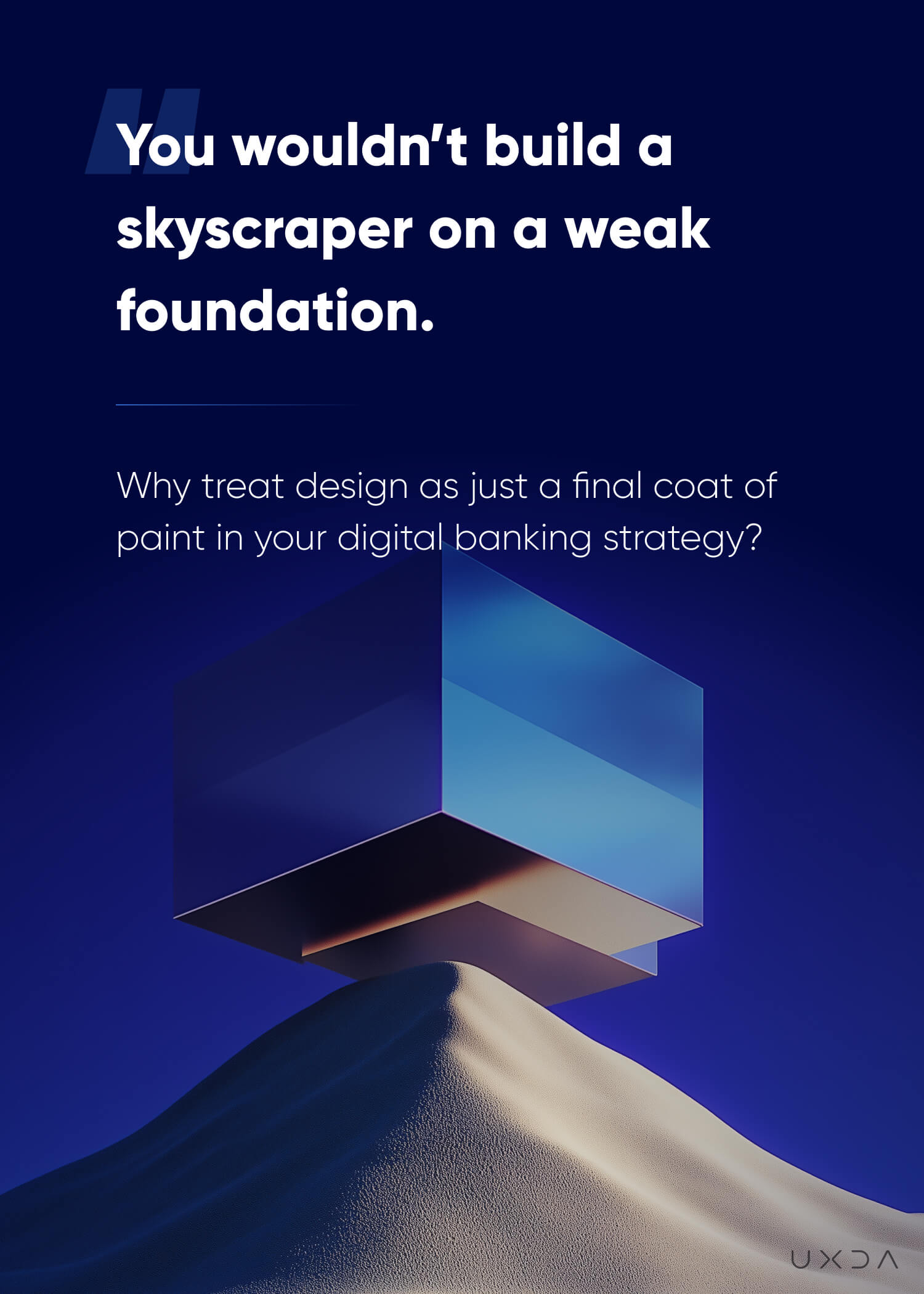
This shift involves seeing a UX design partner as a strategic ally that helps elevate the brand’s digital experience over time. A well-researched, high-quality user experience drives product success, brand trust and customer satisfaction, ultimately reducing the risks of rework and costly failures. Moreover, an improved customer experience can increase company revenue by 10-15%, according to Zippia research.
By collaborating closely with product owners, UX specialists and other key stakeholders, digital-first financial institutions create digital experiences that not only meet the rigorous demands of modern customers but also future-proof the financial brand’s position in the digital market. Here are a few tips from them:
1. Invest in Long-Term Success, Not Just Short-Term Savings
Transformative banking experiences require dedicated resources and top-tier talent. Strategic investment in UX/UI from the start prevents costly rework, accelerates time-to-market and ensures a competitive edge in a crowded industry.
2. Leverage Specialized Financial UX Expertise
Authentic financial UX design goes beyond aesthetics. It integrates regulatory compliance, behavioral insights and industry-specific best practices. Partnering with an agency that understands the nuances of financial products ensures a seamless, compliant and engaging customer experience. Evaluating agencies against recognized industry benchmarks helps ensure alignment with user expectations and regulatory demands.
3. Build a Scalable and Consistent Design Foundation
A strong UX/UI foundation enhances the current experience and supports future growth. Thoughtful planning at the outset ensures a cohesive, intuitive and scalable product, reducing inefficiencies and maintaining brand consistency across digital touchpoints.
4. Foster Strategic Partnerships for Continuous Innovation
A collaborative approach with a UX agency enables ongoing product evolution. Instead of one-time deliverables, a strategic partnership ensures shared innovation, adaptability to market trends and a product that continuously meets evolving user expectations.
5. Align Digital Experiences with Brand Values and Business Goals
Combining UX, brand identity and business objectives creates a seamless digital experience that builds trust and strengthens customer loyalty. Every user interaction should reinforce the brand’s unique value proposition, ensuring the financial experience is functional and emotionally engaging.
The Bottom Line: The Way Forward for Bank Procurement
At UXDA, we are increasingly witnessing a shift toward a more effective procurement approach. Forward-thinking companies recognize the limitations of rigid RFP processes and ensure that key business stakeholders—such as product owners—engage with potential partners before the RFP is even issued. In these cases, the product owner or a senior business representative initiates direct conversations with potential candidates, sharing business goals, exploring expert insights and fostering an open dialogue centered on achieving mutually desired outcomes.
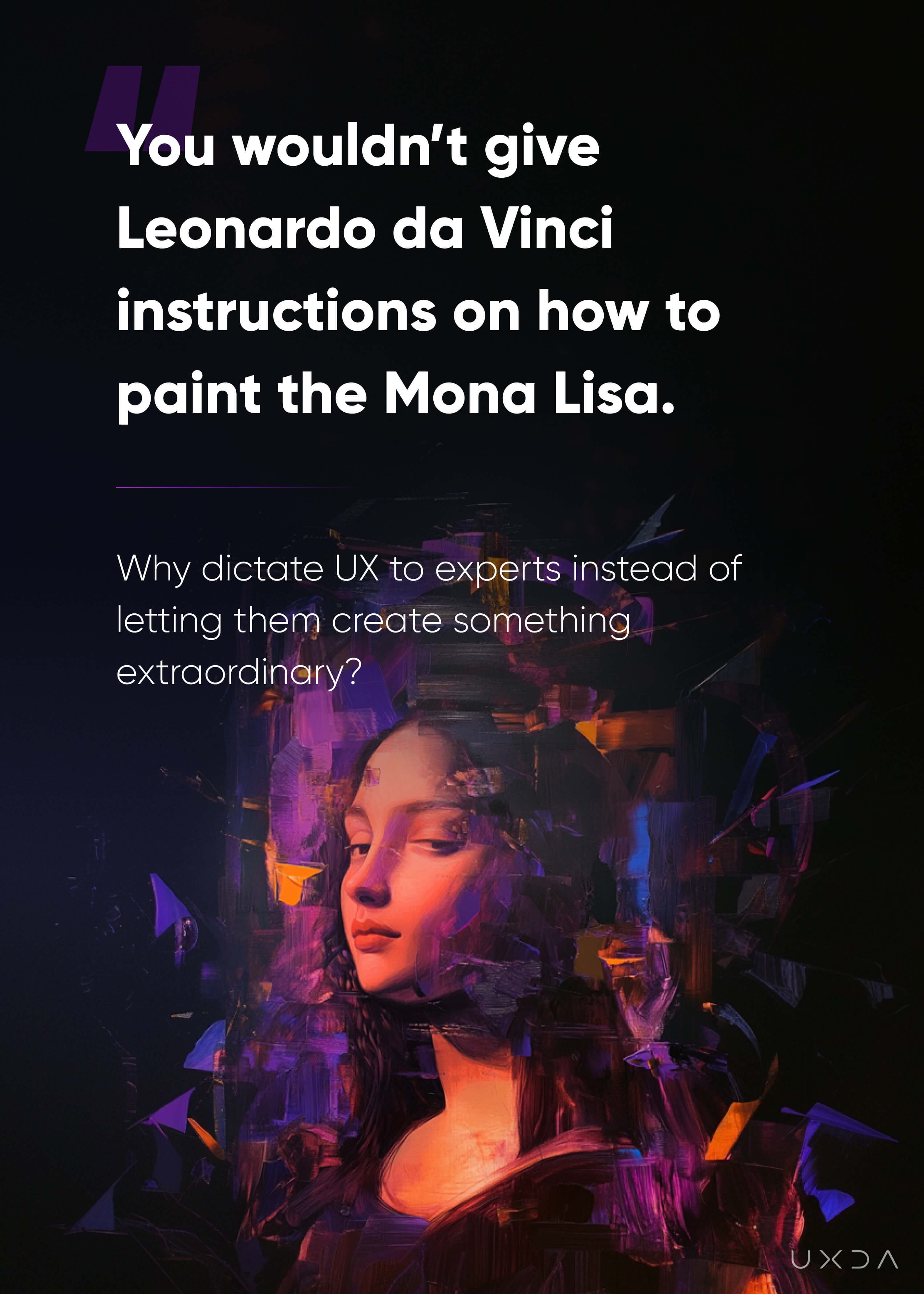
It is critical that this individual remains actively involved throughout the RFP process, ensuring that the selection criteria are driven not solely by procurement checklists but by a genuine understanding of what's needed to create a successful product.
Viewing design as a strategic cornerstone rather than a mere commodity emphasizes the importance of deep collaboration with specialized design agencies—strategic UX partners. This results in digital experiences that truly set a bank apart from the competition.
- Expand Evaluation Criteria
Go beyond cost and compliance. Assess agencies on their domain knowledge, design methodologies, case studies and references from financial projects. Be open to listening to the UX strategy that agencies propose. Are they focused solely on aesthetics, or do they take a broader view of how the product will contribute to the brand experience and long-term business goals? - Align Incentives
Bring procurement, product owners and design teams together with shared success metrics. When procurement is partly measured by product performance, priorities shift from short-term savings to long-term value. - Build Internal Design Literacy
Offer training so procurement staff understand user experience principles, design thinking and product strategy. This helps them spot genuine expertise and make informed decisions that align with the bank’s long-term vision and needs. - Partner for the Long Haul
Look for agencies that prioritize long-term collaboration—iterating and refining as markets evolve. A one-off design phase is not enough in an agile, digital-first era.
In digital transformation, short-term cost savings can lead to long-term catastrophes. Relegating design to a mere afterthought or commodity purchase is a recipe for product failure and reputational risk. By recognizing the strategic value of specialized financial UX design and adopting a holistic view of the digital experience, banks can break the cycle of hasty, one-dimensional procurement decisions.
The next generation of customers demands seamless, intuitive and emotionally engaging digital experiences. If procurement teams fail to adapt and invest in quality product design from the ground up, banks risk not just their digital launches but their standing in an ever-evolving competitive industry. The good news is that with a deeper appreciation for user-centered design and a focus on strategic partnerships, procurement can transform from a digital transformation bottleneck into a foundation of success for the future of digital banking.
Discover our clients' next-gen financial products & UX transformations in UXDA's latest showreel:
If you want to create next-gen financial products to receive an exceptional competitive advantage in the digital age, contact us! With the power of financial UX design, we can help you turn your business into a beloved financial brand with a strong emotional connection with your clients, resulting in success, demand, and long-term customer loyalty.
- E-mail us at info@theuxda.com
- Chat with us in Whatsapp
- Send a direct message to UXDA's CEO Alex Kreger on Linkedin










